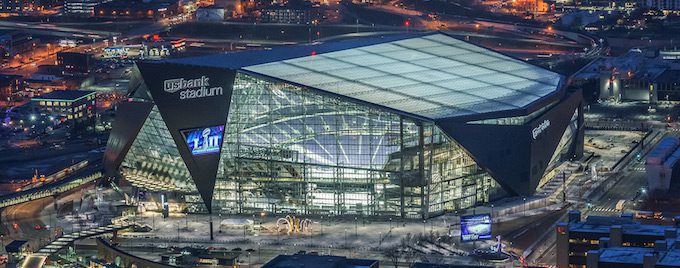This Year’s Super Bowl Stadium Can Withstand Snow and Save Energy

By Dawn Selak, Communications Manager
All those watching the Super Bowl this weekend, take heart: there’s a good chance the Minneapolis stadium roof won’t collapse—as its predecessor the Metrodome’s did in December 2010.
That’s because U.S. Bank Stadium, which opened in 2016, features a sleek, practical roof made of a material that lets the snow fall off the roof into a gigantic snow gutter. This transparent material, Ethylene Tetrafluoroethyl (ETFE), also saves energy. It allows natural sunlight into the stadium, giving the venue a natural, outdoorsy feel, while also allowing solar thermal heating that redistributes warm air in the winter and pumps cold air in the summer.
The unique high-tech roof is only one of the stadium’s many green features. U.S. Bank Stadium was the first NFL stadium to be built with LED sports lighting, which consumes 75% less electricity than the metal halide lighting typically used in the dark ages (pun intended). The facility was also constructed with a plethora of other energy-efficient features, including high-efficiency motors and advanced air-handling units, all of which combine to cut U.S. Bank Stadium’s energy use to 92 thousand British thermal units per square foot (kBtu/sf), compared to the Metrodome’s 104 kBTU/sf, and enabled the stadium to be certified LEED Gold last November by the U.S. Green Building Council…
To continue reading this blog post, visit: http://aceee.org/blog/2018/01/years-super-bowl-stadium-can
About ACEEE: The American Council for an Energy-Efficient Economy acts as a catalyst to advance energy efficiency policies, programs, technologies, investments, and behaviors. For information about ACEEE and its programs, publications, and conferences, visit aceee.org


